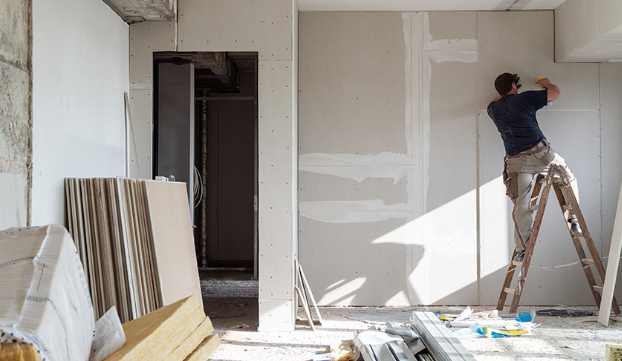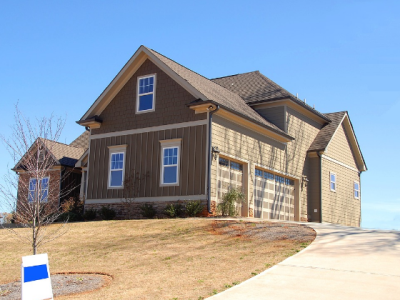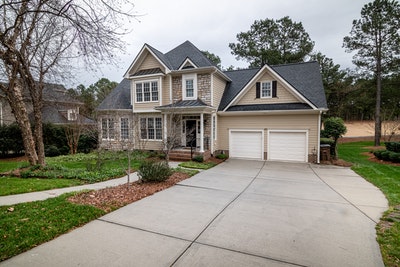Innovative Strategies to Boost ROI from Flipping Homes

It goes without saying that the real estate market is getting more demanding and competitive. Investors want to ensure they receive a healthy return on investment, and finding deals becomes challenging when everyone uses the same tactics.
That’s where house flipping becomes a more feasible and profitable way to make this happen. Purchasing a property, making improvements, and reselling it for a profit is now an excellent method to increase return on investment.
Property flipping might be among the best ways to grow your real estate business when done correctly. Flipping houses, however, might be dangerous if you don’t have any experience in the field.
Keep reading as we examine more priceless house-flipping techniques that can help you comfortably handle your initial flip and optimize your return on investment.
These house-flipping techniques will put you in a better position to maximize outcomes, reduce risks, and make money.
Focus on High-ROI Renovations
1. Kitchen Improvements
The kitchen is one of the main rooms in a house where owners should focus, particularly when renovating a home. Rather than starting from scratch, search for minor, cost-effective upgrades you can implement.
First, paint your cabinets rather than replacing them to save a few thousand dollars. Additionally, put a composite countertop instead of a marble or granite one.
Invest in energy-saving appliances with validated claims instead. Change outdated washbasin handles and doorknobs. Replace your faucets; a sleek, contemporary faucet adds a lovely finishing touch to most kitchens.
Throughout this procedure, it’s important to remember not to overdo the renovation of a property. Recall that you want to earn a profit and match the quality of the nearby residences. Work with a proactive hard money lender in Baltimore who can guide you during the flipping process.
Most homes have a kitchen that receives much traffic, so you want it to appear friendly while maintaining the right balance of elements.
Appliances also play a significant role in any kitchen. For many home buyers, well-maintained kitchen commercial appliances can be a considerable selling element. Therefore, if you want to increase the value of your property, it’s a wise investment.
2. Curb Appeal
Don’t take the “first impression” of the property you’re attempting to sell lightly. People are more inclined to want to see inside a house if it looks good.
Picture yourself pulling up to your home for the first time. What would be your sincere first response? Plan the improvement of your curb appeal if you want to make a good lasting first impression. If nobody wants to stroll by the front of your property, you can’t even showcase all the beautiful upgrades you’ve made inside.
Paying attention to details like mowing hedges, replacing mulch, and installing a stone sidewalk is essential. These aren’t costly overhauls, but they have a significant impact. You can add more plants like colorful flowers, potted plants, miniature trees, and bushes to brighten the house quickly.
Weeds should also be absent. A yard overrun with weeds is guaranteed to detract from your curb appeal. Curb appeal increases significantly by having a well-kept front garden. Applying driveway sealer will also result in considerably better results and won’t break the bank.
With sweeping, the area can be cleaner and more inviting when there is less debris on the driveway, in the walkway, and close to the front door.
3. Smart Upgrades
Smart home technology is a popular addition to help set your flip apart. Tech-savvy renters and buyers gravitate more toward smart home technologies such as security cameras, keyless entry systems, and programmable thermostats.
With the help of smart home technology, homeowners can keep an eye on their thermostats, security systems, and much more from their phones or laptops.
In addition to being fashionable, these gadgets are highly efficient and secure. Seek solutions that are easily reprogrammable and can support several users.
4. Setting the Right Selling Price
Appropriately pricing a flipped house is essential to optimizing return on investment. Potential purchasers frequently show more interest and demand if the asking price exceeds the property’s market value.
Investors might incite bidding wars and a sense of urgency by purposefully underpricing the property. This increased competitiveness raises the sale price at closing and boosts the return on investment.
One of the finest strategies for house flipping is to carefully research renovation ideas and price your property correctly. This will draw in more potential buyers and create an outcome beneficial for the investor and the homebuyer.
5. Use of House Flipping Software
Using house-flipping software solutions is the solution if you want to increase the return on investment (ROI) of your house-flipping venture, either by enabling you to flip more properties annually or by keeping a more significant portion of the proceeds from each sale. Solutions like marketing platforms, secure messaging capabilities, and contract administration systems may handle most of the workload.
Since the real estate market took a dramatic turn, house flipping has become highly volatile, high-risk, and lucrative. Even with a high level of expertise, operating a business still entails higher expenses despite the abundance of potential earnings. That’s why you must increase your efficiency. Keep a close check on all the costs that compromise your profits and reduce them until you have an extremely effective flipping approach that enables you to achieve more.
Using house-flipping software, you can apply cost-effective strategies, automate activities, and gain access to realtor-specific resources. These services are fantastic resources that can completely transform your approach to increase ROI.
Some allow you to directly oversee renters, maintenance, rent payments each month, and other recurring duties. It can even track income and costs to help you better prepare for tax season.
Others, like E-signature portals, simplify obtaining speedy signatures from contractors, tenants, sellers, and buyers. Organizing your projects into packets of signed and ongoing contracts will help you stay more organized.
6. Importance of Having a Back-Up Plan
The key to flipping property is always having a backup plan. A backup plan is essential, even though Plan A should always align with current market data.
Even with meticulous preparation, unanticipated events can sometimes prevent a flip from succeeding. Under such circumstances, you can safeguard your money and improve your return on investment by having a backup plan, such as switching to a buy-and-hold approach, looking into other investment opportunities, or getting a loan.
In the real estate market, flexibility is essential. A meticulously planned safety net ensures your cash continues to generate income if your primary flip has unforeseen difficulties, assisting you in reaching your long-term financial objectives.
7. Buy-and-Hold Strategy
A real estate investor who purchases a property and stays on it for a while uses the buying and holding approach. This is a long-term investment compared to flipping houses.
Most investors use this technique to experience a dependable monthly cash flow from rental income. The properties include condominiums, apartment buildings, single-family homes, and other rental properties.
Property rental usually coexists with buying and holding as a real estate strategy. Few investors are able—or willing, even—to hold onto real estate for a protracted period.
Ideally, buy-and-hold cash flow should cover the property’s purchase price and mortgage payment. To achieve positive cash flow from their real estate portfolio, investors must ensure that their monthly rent income surpasses the expenses incurred by the property.
Most investors use the property they are holding onto to generate short-term revenue. The property is then sold for a profit when its market value increases over time, giving it long-term financial gain.
8. Other Alternative Investment Avenue
Purchasing rental properties offers the possibility of long-term appreciation together with consistent revenue flow.
This strategy can work well when flipped properties aren’t selling as fast as expected. Investors can offset holding costs such as mortgages and taxes by turning a flip into a rental while they wait for the market to revive.
Investment avenues like Wholesale, crowdfunding, and Real Estate Investment Trusts (REITs) also come in handy.
Final Thoughts
Even though it can yield substantial returns, real estate flipping is risky and complex, requiring a well-rounded and educated approach.
Conduct extensive market research, seek advice from seasoned professionals, obtain appropriate financing, and strategically diversify your holdings to gain significantly from the venture.
More importantly, you must identify modifications with a high return on investment at a reasonable price. You will have an excellent probability of turning a profit thanks to this. Turning to house-flipping software solutions can also lighten the burden while trying to increase the return on investment of your real estate venture.






